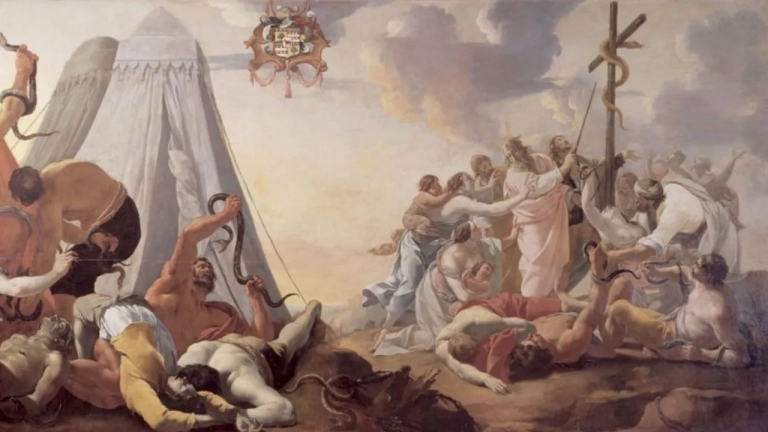The Torah, the foundational text of Judaism, serves as a rich tapestry woven with narratives, laws, and prophecies. Among its intricate threads lies a fascinating array of prefigurations, glimpses of a future figure who would become central to Christianity – Jesus Christ. This article explores the prefigurations of Jesus found in the Torah, shedding light on the prophetic glimpses that bridge the Old and New Testaments.
- The Sacrificial Lamb: In Genesis 22, the story of Abraham offering his son Isaac on Mount Moriah unveils a powerful prefiguration. The willingness of Abraham to sacrifice his son parallels the sacrificial nature of Jesus, often referred to as the Lamb of God in the New Testament (John 1:29).
- The Brazen Serpent: The episode of the brazen serpent in Numbers 21 serves as a vivid foreshadowing of Jesus’ role in salvation. Just as Moses lifted up the serpent on a pole for the healing of the bitten Israelites, Jesus, too, would be lifted up on the cross for the healing of humanity (John 3:14-15).
- The Passover Lamb: The Passover narrative in Exodus 12, with the lamb’s blood protecting the Israelites from the angel of death, prefigures Jesus as the ultimate Passover Lamb whose blood brings redemption and salvation to believers (1 Corinthians 5:7).
- The Prophet Like Moses: Deuteronomy 18:15 speaks of a prophet like Moses whom God would raise up. Jesus, often recognized as the ultimate prophet, fulfills this prefiguration by delivering a new covenant and teaching with divine authority (Acts 3:22-23).
- The Suffering Servant: Isaiah 53, though not directly from the Torah, forms a prophetic bridge between the Old and New Testaments. The description of a suffering servant, despised and rejected, mirrors the life, death, and resurrection of Jesus, providing a compelling prefiguration.
- The Star and Scepter of Jacob: Numbers 24:17 envisions a future figure associated with the symbolism of a star and scepter. In the Gospel of Matthew, the Magi follow a star to find the newborn Jesus, recognizing him as the prophesied King (Matthew 2:1-2).
- The Bread of Life: The manna in the wilderness, as described in Exodus 16, prefigures Jesus as the Bread of Life. Jesus makes explicit connections between himself and the manna, declaring that he is the true bread that comes down from heaven (John 6:31-35).
Sources:
- Hamilton, James M. “Genesis: The NIV Application Commentary.” Zondervan, 1990.Brueggemann, Walter. “Numbers: Interpretation: A Bible Commentary for Teaching and Preaching.” Westminster John Knox Press, 1990.Kaiser, Walter C., Jr. “Exodus: The Expositor’s Bible Commentary.” Zondervan, 1990.Motyer, J. Alec. “The Prophecy of Isaiah: An Introduction & Commentary.” InterVarsity Press, 1993.Goldingay, John. “Psalms: Volume 1: Psalms 1-41.” Baker Academic, 2006.Keil, C. F., & Delitzsch, F. “Commentary on the Old Testament.” Hendrickson Publishers, 1996.
The prefigurations of Jesus found in the Torah form a compelling narrative that transcends the boundaries of time and religious traditions. These glimpses, intricately woven into the fabric of the Hebrew Scriptures, offer a bridge between Judaism and Christianity, emphasizing the continuity of God’s redemptive plan. As one delves into the rich symbolism and prophecies embedded in the Torah, the figure of Jesus emerges as the fulfillment of ancient promises and the embodiment of divine grace and salvation.
